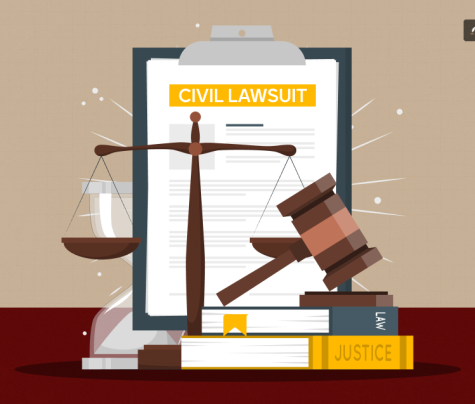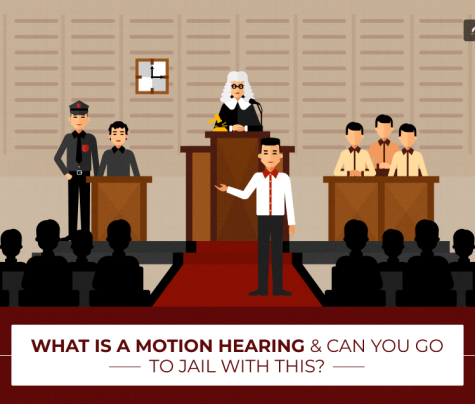
The legal industry often handles documents in multiple languages due to global connectivity. Quick and accurate translation of legal papers offers numerous benefits to law firms and attorneys, including better client relationships and increased productivity.
By employing strategies that improve the translation process, legal professionals can effectively overcome language barriers and ensure their legal documents are clear and accessible across languages.
Why Law Firms Need Fast And Accurate Legal Document Translation
Law firms often deal with cross-border cases and international clients, making rapid and precise legal document translation imperative.
These intricate documents hold crucial information that accurately conveys messages for legal proceedings and client relations. Translation errors can lead to misunderstandings, delays, and legal complications.
Therefore, swift and accurate legal document translation will give law firms a competitive edge.
Enhanced reputation: Law firms that provide high-quality legal document translation show that they are professional and detail-oriented. It helps them build trust with clients and boost their reputation.
Better communication: By translating legal documents into the languages of their clients, witnesses, and counterparts, law firms can ensure that everyone involved in a case understands the same information. Avoid misunderstandings and ensure that the legal process is fair and efficient.
Faster access to information: Lawyers can make quick decisions when legal documents are translated quickly and accurately—giving them a significant advantage in complex cases.
Streamline Your Translation Process With These 9 Easy Ways
Since we discussed the importance of legal translation in law firms, we have listed nine ways you can streamline the translation process.
1. Choose The Right Translator
Firstly, accurate translation of legal documents requires selecting a translator proficient in both language and legal terminology.
This strategic decision simplifies the translation process. A skilled translator understands legal nuances, reducing errors and minimizing the need for extensive revisions. Besides, with their expertise, translated papers maintain legal integrity, saving time and costs.
2. Prepare The Document For Translation
Secondly, preparing legal documents is an important step to streamline and expedite translation.
Law firms enhance translator productivity by organizing information, correcting formatting issues, and providing comprehensive context.
A well-structured source document enables translators to grasp the content more effectively, facilitating the accurate conveyance of legal complexities in the target language.
This preparation reduces the risk of misunderstandings and repeated revisions, accelerating the translation process.
3. Use CAT Tools
Machine Translator for Legal Documents?
Computer-assisted translation (CAT) tools are vital for expediting legal document translation. They facilitate collaborative work among translators and ensure consistency across translations. CAT methods enable the creation of translation memory, glossaries, and terminology databases.
These tools maintain uniformity in legal terminology usage and accelerate the translation of familiar terms. By employing CAT techniques, translators of legal documents can navigate complex content more efficiently, ultimately enhancing the overall translation process.
4. Proofread The Translated Document
Accurate legal translations hinge on thorough proofreading. A native speaker of the target language can proofread the initial translation to ensure that it accurately conveys the legal implications of the original text.
Furthermore, the proofreader should also check the grammar of the translation to ensure that it sounds natural and fluent in the target language.
This step prevents costly errors and upholds the quality of the translated material. Additionally, through early identification of potential issues, review strategies by experienced proofreaders enhance the overall efficiency of the translation process.
5. Track The Translation Process
Monitoring the translation process offers several advantages. Law firms can oversee multiple translation tasks simultaneously through project management systems. This awareness enables timely interventions to ensure translations stay on schedule and meet deadlines.
Furthermore, tracking identifies bottlenecks, enabling continuous operational improvements. This proactive approach directly enhances the efficiency and accuracy of the translation process.
6. Use A Translation Memory
A Translation Memory (TM) is a database of previously translated words and phrases, serving as a valuable tool for future translations. It streamlines the translation of commonly used content by enabling translators to reuse approved translations.
TM enhances document consistency, enhancing the credibility and coherence of translated legal content. Therefore, law firms can significantly expedite the translation of documents containing repetitive language patterns by harnessing the capabilities of TM.
7. Get Feedback From The Client
Client feedback is invaluable for enhancing the translation process. Open communication channels enable law firms to understand client preferences, concerns, and specific legal needs.
Direct communication reduces the need for extensive revisions by ensuring translated documents align accurately with client requirements.
Additionally, soliciting client input fosters collaboration and mutual understanding, streamlining and improving the translation process.
8. Use A Translation Service Provider
Legal firms seeking to streamline translation should consider partnering with a professional translation service. These providers offer a wide range of expertise, a diverse pool of skilled translators, and well-established workflows.
Furthermore, outsourcing translation to professionals ensures consistent, accurate translations across all documents and saves time. This collaboration allows legal professionals to focus on their core strengths while entrusting the translation to qualified experts.
9. Stay Up-To-Date On Legal Terminology

Finally, it is important that you stay updated! You see, the legal terminology evolves constantly, demanding accurate and current translations. Furthermore, legal practitioners should invest in continuous education to grasp new legal jargon and regulatory changes.
Proficiency in contemporary legal terminology minimizes the requirement for extensive research and validation, enhancing translation quality. Additionally, this proactive approach accelerates the translation process and elevates the quality of translated legal documents.
Answering The Most Common Questions About Legal Translations
We have listed a couple of questions you might be wondering that we think you should know about so we listed them here, as follows.
What Is Particularly Important In Translating Legal Documents?
The most important thing when translating legal documents is accuracy. Legal translations must be accurate, as even a single mistake can have adverse consequences for your client. Therefore, you should entrust the translation project to a legal translator whose native language is relevant to the target language.
How Long Does It Take To Translate A Legal Document?
Translating legal documents with around 1,000 words usually takes 1 to 2 days—including quality control review. 2 to 3 days for 1,000 to 3,000 words.
What Are The Challenges In Translating Legal Text?
Avoiding ambiguity is the most challenging when translating legal texts. Translators must familiarize themselves with the subtleties of both legal jargon and grammar to produce precise and unambiguous translations.
Maximizing Document Familiarity For Paralegals And Lawyers
In conclusion, streamlining legal document translation involves deliberate decisions and collaboration.
Law firms will enhance productivity and deliver quality translations swiftly by selecting the right translator, preparing documents thoughtfully, leveraging technology, and incorporating client feedback.
Partnering with translation services ensures accessible and authoritative legal documents across languages.
Read Also:
- 10 Reasons Why Businesses Should Hire Corporate Lawyers
- 10 Questions To Ask Your Lawyer Before You Sign Them For Your Case










1 Reply
Republican Debate Sparks Controversy Amidst UAW Strike and Looming Government Shutdown
September 29, 2023 at 5:12 am
[…] 9 Ways To Streamline The Process Of Translating Legal Documents […]
Reply